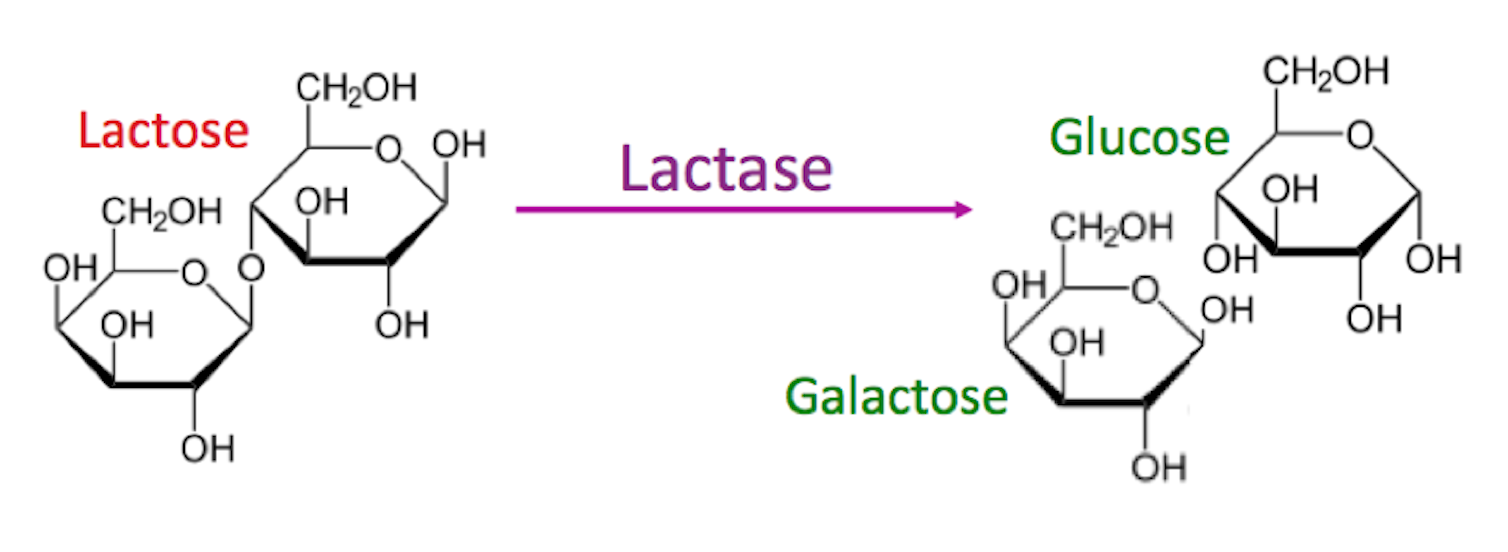Lactase Gene Regulation : What it is
Have you ever wondered why some people can easily digest lactose-rich foods like milk and cheese, while others experience discomfort and digestive issues? The answer lies in the regulation of a gene called lactase. In this article, we will explore what lactase gene regulation is, how it impacts lactose intolerance, and whether it is possible to reverse this condition. Let's dive in!
The Role of Lactase Gene

Before we delve into lactase gene regulation, it's important to understand the function of lactase itself. Lactase is an enzyme produced in the small intestine that is responsible for breaking down lactose, a sugar found in milk and other dairy products. Without lactase, lactose cannot be properly digested, leading to lactose intolerance symptoms such as bloating, gas, and diarrhea.
The production of lactase is regulated by the lactase gene, also known as the LCT gene. This gene provides instructions for making the lactase enzyme, and its activity levels determine the ability to digest lactose throughout a person's life.
Lactase Gene Regulation and Lactose Intolerance
Lactose intolerance occurs when a person's body stops producing enough lactase to effectively digest lactose. This can happen due to several factors, including lactase gene regulation. Individuals with lactose intolerance often experience symptoms after consuming dairy products, which can significantly impact their dietary choices and overall well-being.
Lactase gene regulation involves the interaction of certain genetic and environmental factors. Both genetic variations and external factors, such as age and diet, can influence lactase production.
Can Changing the Microbiome Reverse Lactose Intolerance?

Recent scientific research has explored the potential of changing the microbiome to reverse lactose intolerance. The microbiome refers to the diverse community of bacteria and other microorganisms residing in the gut. These microorganisms play a crucial role in various bodily functions, including digestion.
Studies have suggested that certain probiotics and prebiotics can alter the composition of the gut microbiome and enhance lactose digestion. Probiotics are beneficial bacteria that can be consumed through certain foods or supplements. On the other hand, prebiotics are non-digestible fibers that provide nourishment to the existing gut bacteria.
While more research is needed to fully understand the relationship between the microbiome and lactose intolerance, preliminary studies offer hope for using microbiome interventions as a potential treatment for this condition. However, it is important to seek guidance from healthcare professionals before making any significant changes to your diet.
FAQs about Lactase Gene Regulation
Q: Is lactose intolerance genetic?
A: Yes, lactose intolerance can have a genetic component. Genetic variations in the lactase gene can influence the production levels of lactase enzyme and predispose individuals to lactose intolerance.
Q: Can lactose intolerance develop at any age?
A: Lactose intolerance can develop at any age. However, it is more commonly seen in adults, as lactase production tends to decrease as we grow older. In some cases, lactose intolerance can also be triggered by certain medical conditions or digestive disorders.
Q: Can lactose intolerance be cured?
A: Currently, there is no known cure for lactose intolerance. However, managing the condition can be achieved through dietary modifications, such as avoiding or reducing lactose-containing foods, taking lactase supplements, or consuming lactose-free alternatives.
In Conclusion
Lactase gene regulation plays a crucial role in determining our ability to digest lactose. Lactose intolerance, a condition arising from decreased lactase production, can significantly impact an individual's dietary choices and overall well-being. While the potential of changing the microbiome to reverse lactose intolerance shows promise, further research is needed to determine the effectiveness of such interventions. If you suspect you have lactose intolerance, it is always recommended to consult with a healthcare professional to receive an accurate diagnosis and appropriate management strategies.
- The Role of Lactase Gene
- Lactase Gene Regulation and Lactose Intolerance
- Can Changing the Microbiome Reverse Lactose Intolerance?
Note: This article is for informational purposes only and is not intended to replace professional medical advice.
LactaseGene.docx - Regulation Of The Lactase Gene This Worksheet
 Image Source : www.coursehero.com
Image Source : www.coursehero.com lactase regulation worksheet
Schematic Diagram Of Human Lactase Gene 5 Flanking Region. The Relative
 Image Source : www.researchgate.net
Image Source : www.researchgate.net gene lactase mcm6 relative flanking snp
Regulation Of The Lactase Gene Interactive For 9th - 12th Grade
 Image Source : www.lessonplanet.com
Image Source : www.lessonplanet.com gene lactase regulation curated reviewed
Can Changing The Microbiome Reverse Lactose Intolerance?
 Image Source : theconversation.com
Image Source : theconversation.com lactose lactase enzyme intolerance sugars intolerant microbiome reverse absorbed smaller intestine theconversation
Lactase Gene - Tales From The Genome - YouTube
 Image Source : www.youtube.com
Image Source : www.youtube.com lactase gene genome
Regulation Of The Lactase Gene - HHMI
 Image Source : studylib.net
Image Source : studylib.net lactase regulation gene hhmi worksheet
[Solved] Part III - Regulation Of Lactase Gene Expression In Eukaryotes
lactase regulation expression
Escape From Epigenetic Silencing Of Lactase Expression Is Triggered By
 Image Source : www.nature.com
Image Source : www.nature.com Lactasegene.docx. Lactase regulation gene hhmi worksheet. Escape from epigenetic silencing of lactase expression is triggered by. Lactase gene genome. Regulation of the lactase gene interactive for 9th